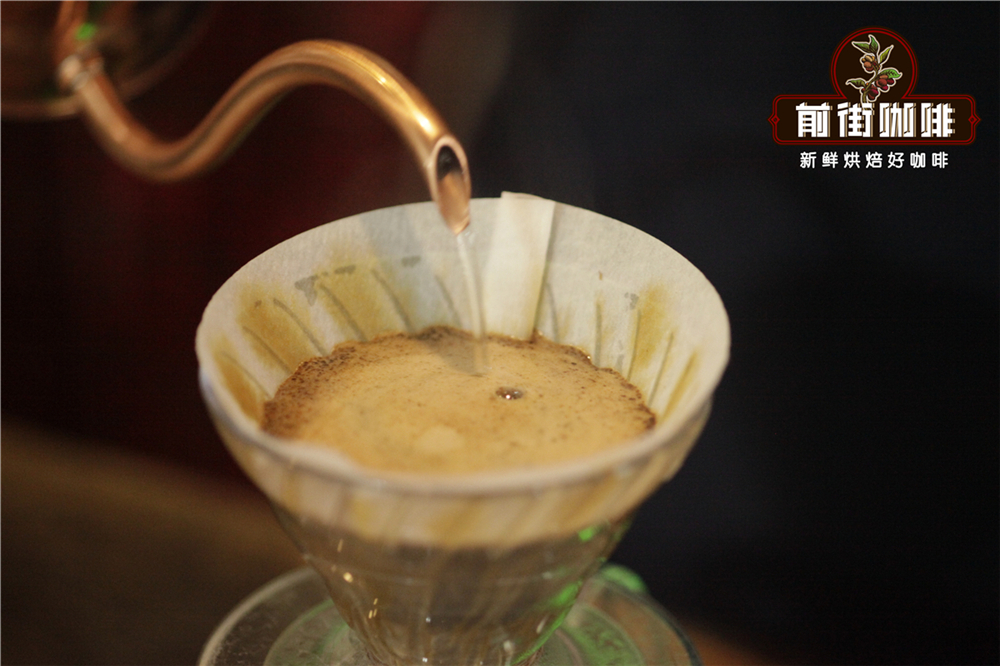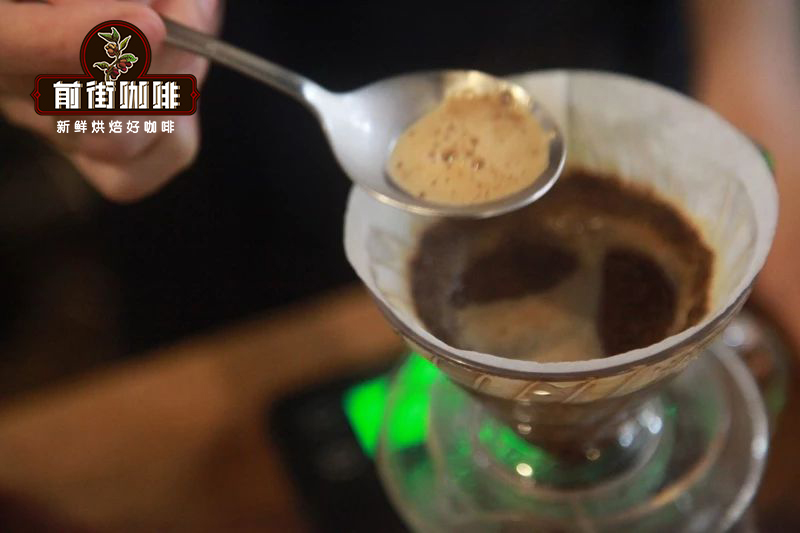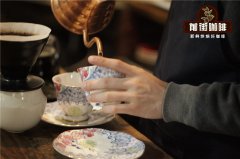There's foam coming out of the hand coffee. What's going on? How good or bad is the hand-made coffee foam?
Guide reading
When brewing hand-brewed coffee, it often feels "cured" because it can make rich coffee foam. So I wonder if you have ever thought about where the coffee foam comes from and what effect it has on the brewing flavor.

Coffee foam
Friends who have brewed by hand must have experienced that in the first stage of water injection after steaming, there will be rich bubbles. The coffee foam in the first stage of water injection is called golden, while the coffee foam in some sections will slowly turn white and become thin.
In order to uncover the mystery of this bubble, Qianjie decided to take a look at the floating foam while brewing. Qianjie normally uses three-stage style to cook Yega Xuefei (medium and shallow baked) and Brazilian Queen's Manor Yellow bourbon (medium and deep baked) respectively. And after the second stage of water injection, use a spoon to fish up the coffee foam on the surface.
When cooking, we can see that the medium-to-light baked Yega Chuefei foam is obviously thinner and lighter than the medium-deep baked yellow bourbon.
When we take out the foam on the surface and observe it, we can see that it is composed of three parts: coffee oil, very coarse powder and very fine powder. Ultra-fine powder can be especially reflected in medium-and deep-roasted coffee.
When comparing the two groups, we can see that the initial foam appears dark brown or golden yellow because the very coarse powder has a low degree of water absorption and light weight, so it will float on the surface at the beginning, and with continuous water injection and flushing, the very coarse powder gradually absorbs water and becomes heavier, and then sinks to the bottom, and all foam liquid foams will gradually fade and whiten. On the other hand, some ultra-fine powder itself is of small quality and is easy to be absorbed and noted by coffee foam and float on the surface.
What does foam taste like?
After a dead taste of coffee foam, the taste can obviously feel the roughness of coffee particles, and its taste is not as negative as imagined, with slight woody, roasted and other miscellaneous flavors, and it is not too repellent to taste alone. but if these flavors are certainly negative in a cup of coffee.

So since the flavor of coffee foam is so negative, will it be better to scrape them off during brewing? Use the Queen's Manor Yellow Bourbon coffee beans for the previous street to boil the normal version and the second section of water respectively, scrape off the foam and then inject the last section of water. The front street found that the cup of coffee that had shaved off the foam was obviously thin in taste and felt a change in flavor.
Actually, coffee with foam is better than coffee without foam.
If you have brewed stale coffee beans, you will observe that there is little or no foam on the surface of the coffee. Then the fine powder floating on the surface will sink to the bottom to participate in more thorough extraction, and some miscellaneous flavors and woody flavors will be extracted into the coffee, coupled with the fine powder sinking to the bottom will clog the water hole, causing excessive extraction risk. This is why stale coffee beans are easy to wash out of wood and miscellaneous flavor.
The foam adsorbs the fine powder to show a bad flavor, but they always float on the surface of the filter cup, and the coffee liquid flows up and down to the right, so it is difficult for the negative flavor to flow into the next pot of coffee. More traditional Japanese schools believe that foam is the source of bitterness, so in the last stage of brewing, a large current will wash up the coffee foam, and then cut off the bitterness brought by the foam.
Important Notice :
前街咖啡 FrontStreet Coffee has moved to new addredd:
FrontStreet Coffee Address: 315,Donghua East Road,GuangZhou
Tel:020 38364473
- Prev
How does the caking of coffee powder affect the effect of humidity on coffee extraction? is the coffee powder coarse or fine in rainy days?
With the continuous drizzle in recent days, Guangzhou has officially ushered in spring. Recently, there is a small partner private channel, how to adjust the Italian production in rainy days? So this issue of baristas will tell you how to deal with Qianjie, hoping to help you. What will be the effect of rainy days? Some friends who do not understand but think this is very powerful may think that sunny and rainy days are not very common, so why should they?
- Next

Hand coffee bitter reason black coffee how to drink is not bitter? How can black coffee taste good?
The flavor of coffee is ever-changing, and there are ups and downs in terms of taste. With the popularity of light-roasted coffee, the sweet flavor of fruit in coffee is shown. In some emerging areas of coffee, deep-roasted coffee is not easy to accept, so does the bitter taste of coffee belong to a bad flavor? Where does the bitterness in the coffee come from? In fact, the bitter taste of coffee mainly comes from a kind called
Related
- Beginners will see the "Coffee pull flower" guide!
- What is the difference between ice blog purified milk and ordinary milk coffee?
- Why is the Philippines the largest producer of crops in Liberia?
- For coffee extraction, should the fine powder be retained?
- How does extracted espresso fill pressed powder? How much strength does it take to press the powder?
- How to make jasmine cold extract coffee? Is the jasmine + latte good?
- Will this little toy really make the coffee taste better? How does Lily Drip affect coffee extraction?
- Will the action of slapping the filter cup also affect coffee extraction?
- What's the difference between powder-to-water ratio and powder-to-liquid ratio?
- What is the Ethiopian local species? What does it have to do with Heirloom native species?

